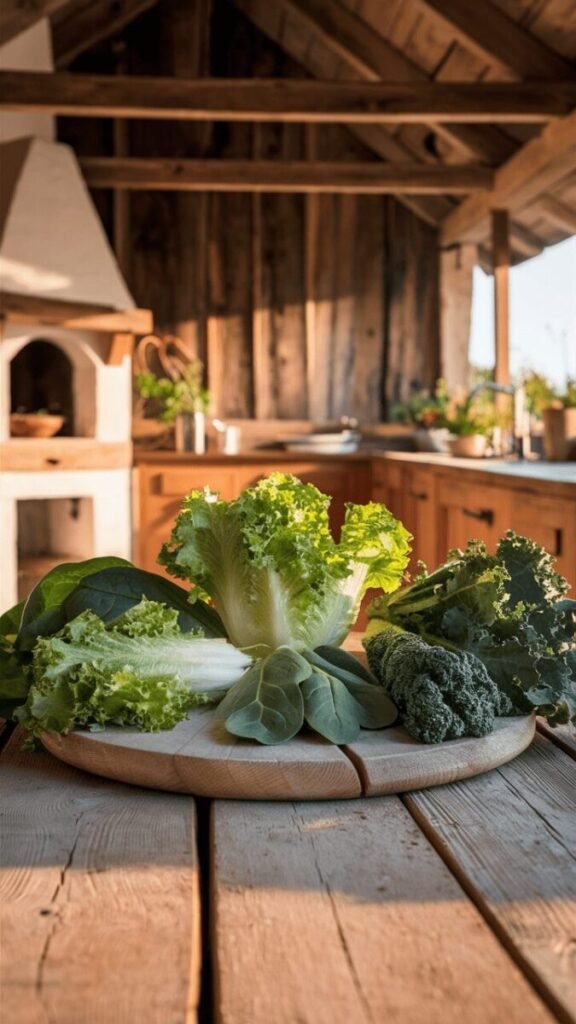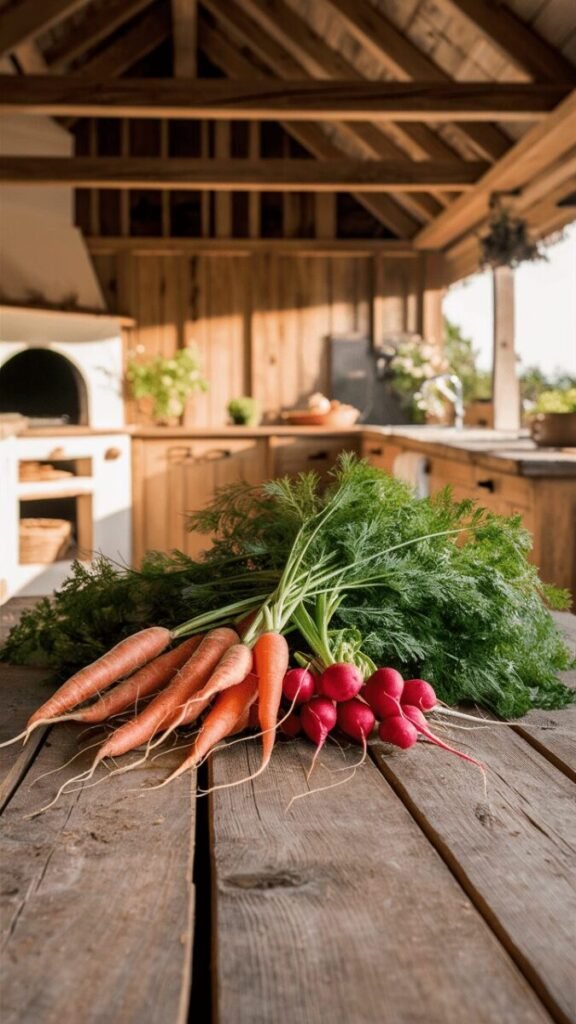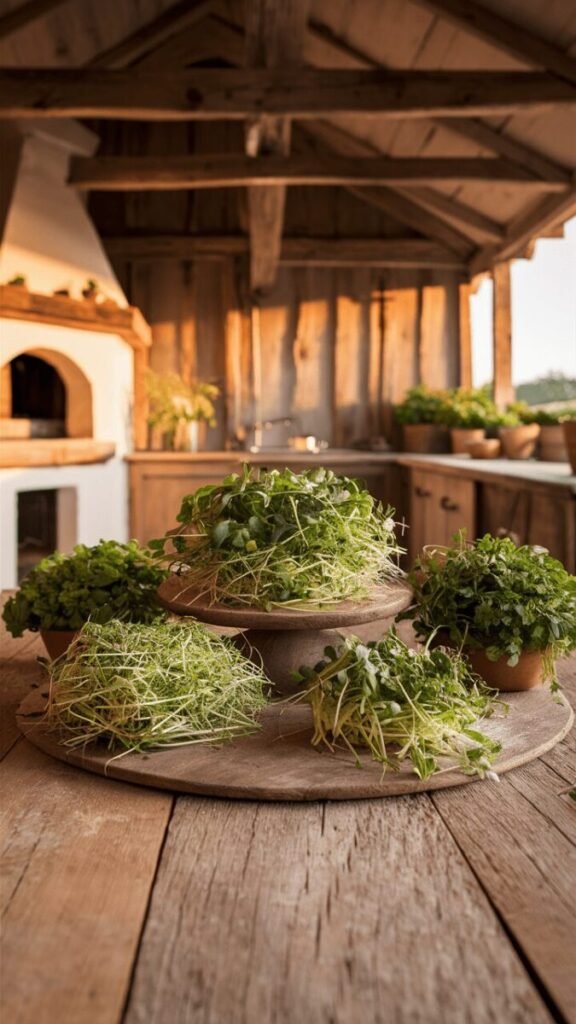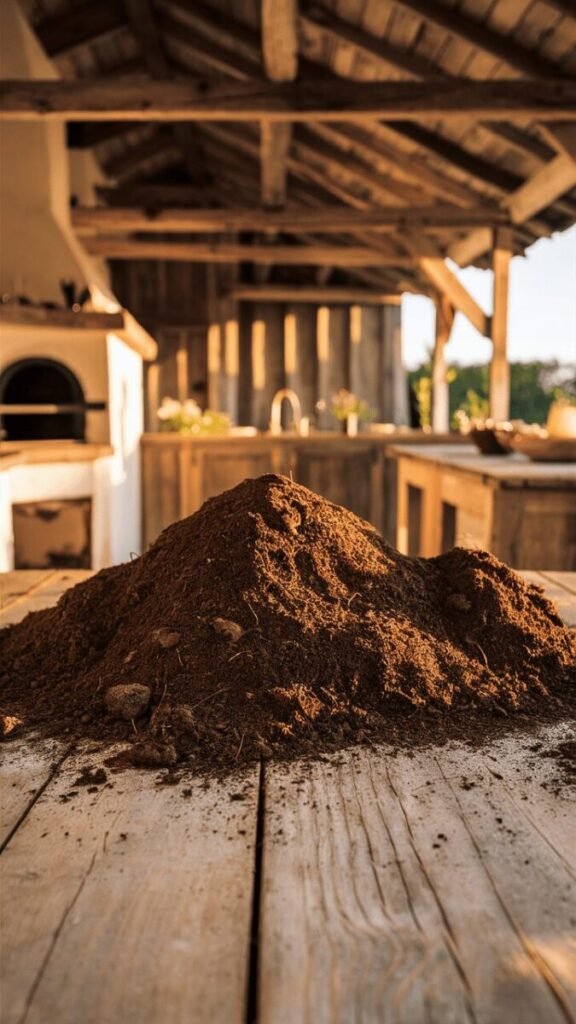The top 10 edible plants to grow indoors year-round are herbs (basil, cilantro, mint), leafy greens (lettuce, spinach, kale), fruiting plants (tomatoes, peppers), root vegetables (carrots, radishes), and microgreens.
These plants are easy to cultivate, require minimal space, and provide fresh produce throughout the year.
Table of Contents
Introduction to Indoor Gardening
Indoor gardening offers numerous benefits for those seeking a sustainable source of fresh produce. It allows you to grow edible plants year-round, regardless of outdoor conditions.
Additionally, indoor gardens serve as space-saving solutions for urban dwellers or those with limited outdoor space.
Incorporating plants into your living environment improves air quality by removing pollutants and providing oxygen.
If you’re interested in learning more about indoor survival gardening, be sure to check out our comprehensive guide.
Aromatic and Flavorful Herbs for Indoor Gardening

Herbs are essential for adding flavor and aroma to your dishes. They thrive in indoor environments and require minimal maintenance. Here are some popular herbs to grow indoors:
- Basil
- Rich in antioxidants and vitamins
- Adds a fresh, sweet flavor to Italian dishes, pesto, and more
- Prefers well-draining soil and bright, indirect sunlight
- Cilantro
- Distinctive, citrusy flavor in Mexican and Asian cuisines
- Both leaves and stems are edible
- Grows quickly and can be harvested continuously
- Mint
- Refreshing flavor for teas, cocktails, and savory dishes
- Requires regular pruning to prevent aggressive spreading
- Grows well in partial shade and moist soil
| Herb | Sunlight | Water | Harvest |
|---|---|---|---|
| Basil | Bright, indirect | Moderate | Regularly prune leaves |
| Cilantro | Full sun to partial shade | Moderate | Cut leaves and stems |
| Mint | Partial shade | Consistent moisture | Prune regularly |
Actionable Bullet Points:
- Start with high-quality seeds or seedlings
- Provide adequate drainage in containers
- Rotate herbs to ensure continuous growth and harvest
- Experiment with different herb varieties for diverse flavors
For those interested in growing herbs in water or buckets, be sure to check out our articles on herbs to grow in water and herbs to grow in buckets.
Nutritious Leafy Greens for Your Indoor Garden

Leafy greens are versatile and packed with essential vitamins and minerals. They are well-suited for indoor cultivation and can be grown year-round with the right conditions. Consider these nutrient-dense options:
- Lettuce
- Low-calorie and high in vitamins A, K, and C
- Varieties like romaine, butterhead, and loose-leaf thrive indoors
- Prefers cooler temperatures and consistent moisture
- Spinach
- Rich in iron, folate, and antioxidants
- Grows quickly and can be harvested multiple times
- Tolerates low light conditions but prefers bright, indirect sunlight
- Kale
- Packed with vitamins A, C, and K, as well as fiber
- Curly and lacinato varieties are suitable for indoor gardens
- Requires well-draining soil and consistent moisture
| Leafy Green | Sunlight | Water | Harvest |
|---|---|---|---|
| Lettuce | Bright, indirect | Consistent moisture | Cut leaves as needed |
| Spinach | Bright, indirect | Moderate | Cut outer leaves |
| Kale | Bright, indirect | Moderate | Cut outer leaves |
Actionable Bullet Points:
- Rotate greens to ensure continuous harvests
- Provide adequate lighting (natural or grow lights)
- Consider hydroponic systems for optimal growth
- Regularly monitor and adjust soil moisture levels
For those with limited space, check out our article on vegetables for small space gardening, which includes tips on growing leafy greens in containers.
Delicious Fruiting Plants for Indoor Cultivation

Fruiting plants not only add vibrant colors to your indoor garden but also provide a bountiful harvest of fresh, flavorful produce. While they require more attention than herbs or leafy greens, the rewards are well worth the effort. Consider these popular choices:
- Tomatoes
- Rich in vitamins A, C, and potassium
- Indeterminate (vining) varieties are ideal for indoor growing
- Require consistent warmth, humidity, and pollination
- Peppers
- Offer a range of flavors from sweet to spicy
- Well-suited for indoor gardens due to their compact size
- Thrive in warm temperatures and ample sunlight
Growing Tips for Fruiting Plants Indoors:
- Provide support structures (cages, stakes) for vining plants
- Ensure adequate air circulation to prevent disease
- Hand-pollinate flowers for successful fruit production
- Monitor soil moisture and fertilize regularly
| Fruiting Plant | Sunlight | Water | Harvest |
|---|---|---|---|
| Tomatoes | Full sun (6-8 hours) | Consistent moisture | Regularly pick ripe fruits |
| Peppers | Full sun (6-8 hours) | Moderate | Regularly pick ripe fruits |
For those interested in growing fruiting plants in containers, check out our article on high-calorie crops in containers, which includes tips on maximizing your indoor garden’s yield.
Crunchy Root Vegetables to Grow Inside

Root vegetables are often overlooked for indoor gardening, but they can thrive in the right conditions. These crunchy and flavorful options add variety to your indoor harvest:
- Carrots
- Rich in vitamins A, K, and fiber
- Suitable for containers with deep, well-draining soil
- Prefer cooler temperatures and consistent moisture
- Radishes
- Quick-growing and low-maintenance
- Offer a peppery kick to salads and dishes
- Thrive in cooler conditions with ample sunlight
Companion Planting for Root Vegetables:
- Grow radishes alongside carrots to deter carrot flies
- Interplant with leafy greens or herbs for efficient space utilization
- Rotate crops to prevent soil depletion and disease
| Root Vegetable | Sunlight | Water | Harvest |
|---|---|---|---|
| Carrots | Bright, indirect | Consistent moisture | Pull when mature |
| Radishes | Full sun | Moderate | Pull when mature |
Actionable Bullet Points:
- Choose shorter, container-friendly varieties
- Provide deep containers for proper root development
- Thin seedlings to prevent overcrowding
- Harvest regularly to encourage continuous growth
If you’re interested in learning more about growing root vegetables like potatoes, be sure to check out our article on potatoes as a survival crop.
Nutrient-Dense Microgreens for Indoor Gardens

Microgreens are nutrient powerhouses that can be grown quickly and with minimal space. They are the immature greens of vegetables and herbs, harvested just after the cotyledon leaves appear. Here’s what you need to know:
- What Are Microgreens?
- Miniature greens packed with vitamins, minerals, and antioxidants
- Harvested within 7-14 days of germination
- Offer a concentrated flavor and crunch
- Benefits of Growing Microgreens
- Easy to grow indoors with minimal equipment
- Continuously harvest for a steady supply
- Versatile in salads, sandwiches, and garnishes
- Popular Microgreen Varieties
- Brassicas (broccoli, radish, arugula)
- Lettuces and greens (kale, spinach, mustard)
- Herbs (basil, cilantro, dill)
Actionable Bullet Points:
- Use trays or shallow containers with drainage holes
- Sow seeds densely for optimal growth
- Harvest by cutting just above the soil line
- Rotate varieties for diverse flavors and nutrients
For a comprehensive guide on growing microgreens indoors, check out our article on growing microgreens for preppers.
Creating the Perfect Indoor Gardening Environment

To ensure the success of your indoor garden, it’s essential to provide the right growing conditions. Here’s what you need to consider:
- Lighting Requirements
- Most edible plants require at least 6 hours of direct sunlight
- Supplement with grow lights if natural light is insufficient
- Consider full-spectrum LED or fluorescent bulbs
- Soil and Container Choices
- Use well-draining, nutrient-rich potting mix
- Choose containers with proper drainage holes
- Consider self-watering or hydroponic systems for easy maintenance
- Watering and Humidity Considerations
- Monitor soil moisture and water consistently
- Maintain appropriate humidity levels for optimal growth
- Consider using a humidifier or pebble trays for added humidity
Actionable Bullet Points:
- Position plants near south-facing windows for maximum sunlight
- Rotate containers periodically for even growth
- Use a soil moisture meter to gauge watering needs
- Ventilate the area to prevent disease
For a comprehensive guide on starting an indoor container garden, check out our article on starting a container garden.
Keeping Your Indoor Garden Healthy
Maintaining a healthy indoor garden requires vigilance against pests and diseases. By taking proactive measures, you can ensure your plants thrive and produce a bountiful harvest.
- Common Pests in Indoor Gardens
- Aphids, whiteflies, and spider mites
- Fungus gnats and shore flies
- Mealybugs and scale insects
- Organic Pest Control Methods
- Introduce beneficial insects like ladybugs and lacewings
- Use insecticidal soaps or neem oil
- Remove infected plants and practice good sanitation
- Preventing Plant Diseases
- Maintain proper air circulation and humidity levels
- Avoid overwatering and ensure good drainage
- Rotate crops and use sterile potting mix
- Monitor plants regularly for signs of disease like those outlined in our article on common plant diseases
| Pest/Disease | Prevention | Treatment |
|---|---|---|
| Aphids | Introduce ladybugs | Insecticidal soap, neem oil |
| Fungus gnats | Well-draining soil | Yellow sticky traps, BTI (Bacillus thuringiensis israelensis) |
| Powdery mildew | Proper air circulation | Baking soda solution, neem oil |
Actionable Bullet Points:
- Quarantine new plants before introducing them to your garden
- Practice crop rotation to disrupt pest and disease cycles
- Use row covers or netting to prevent pest infestations
- Prune and remove infected plant parts promptly
For more natural pest control methods, check out our articles on natural pest killers and plants that repel pests.
Enjoying the Fruits of Your Indoor Garden
After dedicating time and effort to your indoor garden, it’s time to reap the rewards. Proper harvesting and storage techniques will ensure you can savor your fresh produce for as long as possible.
- When to Harvest
- Leafy greens: Cut outer leaves when they reach desired size
- Herbs: Harvest regularly to promote new growth
- Fruiting plants: Pick when fully colored and firm
- Root vegetables: Harvest when mature, based on variety
- Proper Storage Techniques
- Refrigerate leafy greens, herbs, and root vegetables in airtight containers
- Store tomatoes and peppers at room temperature until fully ripe
- Consider dehydrating or freezing excess produce for later use
- Extending the Harvest
- Stagger planting for continuous yields
- Successional sowing of quick-growing crops like radishes and microgreens
- Preserve excess harvests through canning, pickling, or drying
Actionable Bullet Points:
- Harvest in the morning for optimal freshness and flavor
- Handle produce gently to prevent bruising or damage
- Rotate stored produce to ensure older items are used first
- Experiment with different preservation methods for variety
By following these guidelines, you can enjoy a steady supply of fresh, nutrient-dense produce from your indoor garden year-round. With a little care and attention, you’ll have a thriving oasis of edible plants right in your own home.
For more tips on making the most of your indoor garden, be sure to check out our article specifically on edible plants for indoor gardening.


